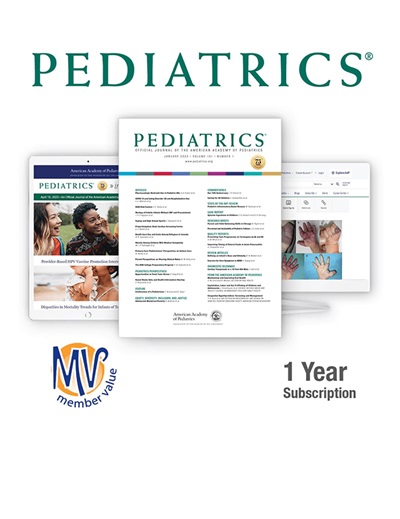Caregiver Perspectives on Improving Government Nutrition Benefit Programs.
IF 6.4
2区 医学
Q1 PEDIATRICS
引用次数: 0
Abstract
OBJECTIVES The Special Supplemental Nutrition Program for Women, Infants, and Children (WIC) and Supplemental Nutrition Assistance Program (SNAP) provide essential nutrition support for low-income families. However, many eligible families do not receive or fully redeem these benefits. We aimed to understand current and former WIC and SNAP beneficiaries' perceptions of and suggestions for improving both programs. METHODS We conducted semistructured phone interviews with caregivers of pediatric patients who were current or former WIC and SNAP beneficiaries at 2 academic pediatric primary care clinics. Interviews were recorded, transcribed, and coded by 2 independent coders using thematic analysis, resolving discrepancies by consensus. Interviews continued until data saturation was reached. RESULTS We interviewed 40 caregivers who were predominantly Black (88%) mothers (90%), with 53% and 83% currently using WIC and SNAP, respectively. We identified 4 themes related to participation barriers: (1) limited product variety available through WIC, (2) inconvenience and stigma associated with purchasing WIC products, (3) SNAP income-based eligibility criteria, and (4) burdensome SNAP enrollment and recertification processes. We identified 3 themes related to suggestions for improvement: (a) decreasing stigma associated with participation, (b) allowing online or phone-based enrollment, and (c) improving coordination with health care systems. CONCLUSIONS WIC and SNAP beneficiaries identified several modifiable barriers to enrollment and benefits redemption. Pediatric providers should advocate for programmatic improvements that make it easier for families to access and redeem benefits and should consider implementing innovative cross-sector interventions like medical-financial partnerships, direct WIC and SNAP referrals, and data sharing with government assistance offices.护理人员对改进政府营养福利计划的看法。
目标 妇女、婴儿和儿童特别补充营养计划 (WIC) 和补充营养援助计划 (SNAP) 为低收入家庭提供必要的营养支持。然而,许多符合条件的家庭并没有获得或完全兑现这些福利。我们的目的是了解现任和前任 WIC 和 SNAP 受益人对这两项计划的看法和改进建议。方法:我们在两家学术性儿科初级保健诊所对现任或前任 WIC 和 SNAP 受益人的儿科患者护理人员进行了半结构化电话访谈。访谈由两名独立的编码员使用主题分析法进行记录、转录和编码,并在协商一致的基础上解决差异。结果我们采访了 40 名护理人员,他们主要是黑人(88%)和母亲(90%),目前分别有 53% 和 83% 的人在使用 WIC 和 SNAP。我们确定了 4 个与参与障碍有关的主题:(1)WIC 提供的产品种类有限;(2)购买 WIC 产品带来的不便和耻辱;(3)SNAP 基于收入的资格标准;以及(4)繁琐的 SNAP 注册和重新认证流程。我们确定了 3 个与改进建议相关的主题:(a)减少与参与相关的耻辱感,(b)允许在线或电话注册,以及(c)改善与医疗保健系统的协调。儿科医疗机构应倡导改进计划,使家庭更容易获得和兑现福利,并应考虑实施创新的跨部门干预措施,如医疗财务合作、直接转介 WIC 和 SNAP 以及与政府援助办公室共享数据。
本文章由计算机程序翻译,如有差异,请以英文原文为准。
求助全文
约1分钟内获得全文
求助全文
来源期刊

Pediatrics
医学-小儿科
CiteScore
12.80
自引率
5.00%
发文量
791
审稿时长
2-3 weeks
期刊介绍:
The Pediatrics® journal is the official flagship journal of the American Academy of Pediatrics (AAP). It is widely cited in the field of pediatric medicine and is recognized as the leading journal in the field.
The journal publishes original research and evidence-based articles, which provide authoritative information to help readers stay up-to-date with the latest developments in pediatric medicine. The content is peer-reviewed and undergoes rigorous evaluation to ensure its quality and reliability.
Pediatrics also serves as a valuable resource for conducting new research studies and supporting education and training activities in the field of pediatrics. It aims to enhance the quality of pediatric outpatient and inpatient care by disseminating valuable knowledge and insights.
As of 2023, Pediatrics has an impressive Journal Impact Factor (IF) Score of 8.0. The IF is a measure of a journal's influence and importance in the scientific community, with higher scores indicating a greater impact. This score reflects the significance and reach of the research published in Pediatrics, further establishing its prominence in the field of pediatric medicine.
 求助内容:
求助内容: 应助结果提醒方式:
应助结果提醒方式:


